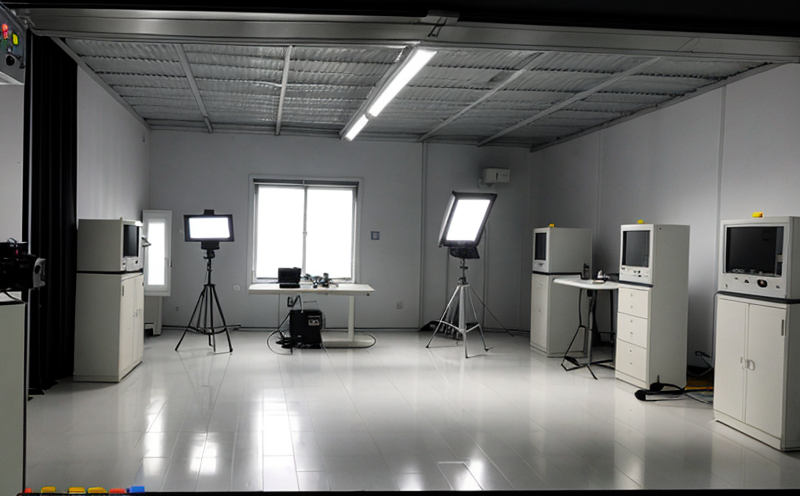IEC TR 62778 Photometric Assessment of Light Source Safety
The International Electrotechnical Commission (IEC) Technical Report IEC TR 62778 provides a detailed guideline for the photometric assessment of light sources. This technical report is crucial for ensuring that lighting products meet safety and performance standards, particularly in terms of optical radiation hazards.
Photometric testing involves measuring the luminous intensity distribution of a light source to assess its compliance with various safety regulations. This process is essential for product development and quality assurance within the lighting industry. By conducting thorough photometric assessments, manufacturers can ensure that their products do not pose risks such as eye injury or fire hazards.
The IEC TR 62778 framework covers a wide range of light sources including LEDs, CFLs, and incandescent bulbs among others. It provides methodologies for evaluating the optical radiation hazard classification (ORHC) based on the measured luminous intensity distribution. This classification helps determine whether a product is safe to use under normal operating conditions.
Conducting photometric assessments according to IEC TR 62778 involves several key steps: selecting appropriate test equipment, preparing the specimen for testing, conducting actual measurements, and interpreting results against specified criteria. The selection of suitable measurement instruments is critical; they must be capable of accurately capturing the light distribution across different angles.
Preparation of specimens includes ensuring that the product under test is representative of what will be sold to consumers or used in commercial installations. This might involve mounting the product on a standard fixture and adjusting it so that its position mimics real-world usage scenarios as closely as possible.
The actual testing process itself entails positioning the specimen within the field of view of the photometer, which then records data about the emitted light at various angles around the source. This data is used to create an intensity plot known as a candela map or IES file depending on the format chosen by the manufacturer.
Interpreting these results involves comparing them against predefined thresholds established in accordance with relevant safety standards like IEC 62471, which deals specifically with optical radiation hazards from lamps and lamp systems. Based on this comparison, a final classification is assigned to each product indicating its potential risks associated with improper handling or misuse.
Understanding the implications of these classifications is important because they guide both manufacturers in designing safer products and regulatory bodies in enforcing appropriate safeguards against harmful exposure levels. Properly conducted photometric assessments thus play an integral role not only in product development but also in maintaining public health through informed decision-making processes regarding new lighting technologies.
It’s worth noting that while IEC TR 62778 primarily focuses on ensuring the safety of light sources, it also contributes to broader sustainability goals by promoting efficient energy usage. Efficient lighting systems contribute significantly towards reducing greenhouse gas emissions and improving overall environmental impact.
In conclusion, adherence to standards like IEC TR 62778 is not merely a compliance exercise but rather an investment in creating safer, more effective light sources that enhance user experience while minimizing adverse effects on human health and the environment.
Applied Standards
| Standard Name | Description |
|---|---|
| IEC 62471 | This standard defines the procedures for determining optical radiation hazard classification (ORHC) and provides guidance on how to mitigate risks associated with high-intensity light sources. |
| ISO 13666 | Focuses on photometric measurements of luminaires, including methods for determining the average intensity in different directions. |
Scope and Methodology
The scope of IEC TR 62778 encompasses all types of light sources, whether they are used for general illumination or specialized applications such as surgical lighting. The methodology described in this technical report covers the entire process from initial planning through final evaluation.
| Step | Description |
|---|---|
| Planning and Preparation | Identify the light source to be tested, select appropriate measurement equipment, prepare the specimen for testing. |
| Measurement Setup | Position the specimen within the measurement field of view ensuring accurate representation of real-world usage conditions. |
| Data Collection | Gather detailed information about the emitted light, including its intensity distribution at various angles. |
| Analysis and Interpretation | Analyze collected data against specified criteria to determine whether the light source complies with relevant safety standards. |
Benefits
Compliance with IEC TR 62778 brings numerous benefits to manufacturers, regulatory bodies, and consumers alike. For manufacturers, it ensures early identification of potential safety issues allowing for timely corrective actions during the design phase.
Regulatory authorities benefit from having clear guidelines that simplify enforcement efforts while promoting industry best practices. Consumers gain peace of mind knowing that they are purchasing products that have been rigorously tested and certified as safe.
Beyond safety considerations, adherence to these standards can lead to improved product performance enhancing user satisfaction. Efficient lighting solutions contribute positively towards energy conservation efforts thereby supporting global sustainability initiatives.





